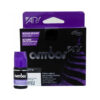بیومیمتیک در دندانپزشکی: تقلید از طبیعت برای ترمیم و تقویت دندانها
مقدمه
بیومیمتیک در دندانپزشکی یک رویکرد نوین است که بر پایه تقلید از ساختار و عملکرد طبیعی دندانها برای ترمیم و تقویت آنها استوار است. این روش با هدف حفظ حداکثر بافت دندان و استفاده از مواد و تکنیکهایی که به بازسازی طبیعی دندانها نزدیکتر هستند، به کار گرفته میشود. در این مقاله به بررسی اصول، کاربردها و مزایای بیومیمتیک در دندانپزشکی پرداخته میشود.
اصول بیومیمتیک
بیومیمتیک از واژههای یونانی “بیوس” به معنی زندگی و “میمسیس” به معنی تقلید گرفته شده است. در دندانپزشکی، این رویکرد تلاش میکند تا ساختار و عملکرد طبیعی دندان را بازسازی کند. این شامل استفاده از مواد ترمیمی است که خواص مکانیکی و زیستی مشابه با دندان طبیعی دارند و تکنیکهایی که به حداقل تخریب بافت دندان منجر میشوند.
کاربردهای بیومیمتیک در دندانپزشکی
- ترمیمهای محافظهکارانه: استفاده از رزینهای کامپوزیت و سرامیکها که خواص مکانیکی مشابه با دندان طبیعی دارند، برای ترمیمهای کوچک و متوسط.
- پیوندهای زیستی: استفاده از مواد زیستفعال که به تقویت پیوند بین مواد ترمیمی و بافت دندان کمک میکنند.
- تکنیکهای حداقل تهاجمی: روشهایی که نیاز به برداشتن حداقل بافت دندان دارند، مانند تکنیکهای لیزری و میکروسکوپی.
مزایای بیومیمتیک در دندانپزشکی
- حفظ ساختار طبیعی دندان: استفاده از روشها و مواد بیومیمتیک به حفظ حداکثری بافت دندان کمک میکند، که منجر به افزایش طول عمر دندان و کاهش نیاز به درمانهای تهاجمیتر در آینده میشود.
- ترمیمهای با دوام و زیباشناسی بالا: مواد ترمیمی بیومیمتیک مانند رزینهای کامپوزیت و سرامیکها، نه تنها از لحاظ مکانیکی مقاوم هستند، بلکه از نظر زیباشناسی نیز بسیار طبیعی به نظر میرسند.
- کاهش حساسیت دندانی: استفاده از مواد زیستفعال و تکنیکهای حداقل تهاجمی به کاهش حساسیت پس از درمان کمک میکند.
چالشهای بیومیمتیک در دندانپزشکی
- هزینههای بالا: مواد و تکنیکهای بیومیمتیک معمولاً هزینهبر هستند، که ممکن است برای برخی از بیماران مقرون به صرفه نباشند.
- نیاز به آموزش و تخصص: اجرای صحیح تکنیکهای بیومیمتیک نیاز به دانش و مهارت بالای دندانپزشکان دارد، که ممکن است نیاز به دورههای آموزشی پیشرفته داشته باشند.
نتیجهگیری
بیومیمتیک در دندانپزشکی یک رویکرد نوآورانه و موثر برای ترمیم و تقویت دندانها است که با تقلید از ساختار و عملکرد طبیعی دندانها، به حفظ بافت دندان و افزایش طول عمر ترمیمها کمک میکند. با وجود چالشهایی مانند هزینههای بالا و نیاز به تخصص بیشتر، این روش به عنوان یک گزینه جذاب و پایدار در دندانپزشکی مدرن محسوب میشود.
منابع
- Kinney, J. H., Balooch, M., Marshall, S. J., Marshall, G. W., & Weihs, T. P. (2001). “Hardness and Young’s modulus of human peritubular and intertubular dentine.” Archives of Oral Biology, 46(8), 801-809.
- Ferracane, J. L. (2011). “Resin composite–state of the art.” Dental Materials, 27(1), 29-38.
- Van Meerbeek, B., De Munck, J., Yoshida, Y., Inoue, S., Vargas, M., Vijay, P., … & Lambrechts, P. (2003). “Buonocore memorial lecture. Adhesion to enamel and dentin: current status and future challenges.” Operative Dentistry, 28(3), 215-235.
Biomimetics in Dentistry: Mimicking Nature for Tooth Restoration and Reinforcement
Introduction
Biomimetics in dentistry is an innovative approach based on mimicking the natural structure and function of teeth to restore and reinforce them. This method aims to preserve maximum tooth tissue and utilize materials and techniques that closely replicate the natural rebuilding process of teeth. This article examines the principles, applications, and advantages of biomimetics in dentistry.
Principles of Biomimetics
Biomimetics derives from the Greek words “bios” meaning life and “mimesis” meaning imitation. In dentistry, this approach strives to reconstruct the natural structure and function of teeth. This includes using restorative materials with mechanical and biological properties similar to natural teeth and employing techniques that minimize tooth tissue removal.
Applications of Biomimetics in Dentistry
- Conservative Restorations: Using composite resins and ceramics with mechanical properties akin to natural teeth for small and medium-sized restorations.
- Biological Bonding: Utilizing bioactive materials that enhance the bond between restorative materials and tooth tissue.
- Minimally Invasive Techniques: Methods requiring minimal tooth tissue removal, such as laser and microscopic techniques.
Advantages of Biomimetics in Dentistry
- Preservation of Natural Tooth Structure: Biomimetic methods and materials help maximize tooth tissue preservation, leading to increased tooth longevity and reduced need for more invasive treatments in the future.
- Durable and Aesthetic Restorations: Biomimetic restorative materials like composite resins and ceramics are not only mechanically robust but also aesthetically natural-looking.
- Reduced Tooth Sensitivity: The use of bioactive materials and minimally invasive techniques helps reduce post-treatment sensitivity.
Challenges of Biomimetics in Dentistry
- High Costs: Biomimetic materials and techniques are generally expensive, which might not be affordable for all patients.
- Need for Education and Expertise: Proper implementation of biomimetic techniques requires high levels of knowledge and skill, necessitating advanced training for dentists.
Conclusion
Biomimetics in dentistry is an innovative and effective approach for tooth restoration and reinforcement, mimicking the natural structure and function of teeth to preserve tooth tissue and enhance the longevity of restorations. Despite challenges such as high costs and the need for specialized training, this method presents an attractive and sustainable option in modern dentistry.
References
- Kinney, J. H., Balooch, M., Marshall, S. J., Marshall, G. W., & Weihs, T. P. (2001). “Hardness and Young’s modulus of human peritubular and intertubular dentine.” Archives of Oral Biology, 46(8), 801-809.
- Ferracane, J. L. (2011). “Resin composite–state of the art.” Dental Materials, 27(1), 29-38.
- Van Meerbeek, B., De Munck, J., Yoshida, Y., Inoue, S., Vargas, M., Vijay, P., … & Lambrechts, P. (2003). “Buonocore memorial lecture. Adhesion to enamel and dentin: current status and future challenges.” Operative Dentistry, 28(3), 215-235
 آراتیس | آراتیس تامین کننده مواد دندانپزشکی و تجهیزات دندانپزشکی
آراتیس | آراتیس تامین کننده مواد دندانپزشکی و تجهیزات دندانپزشکی

